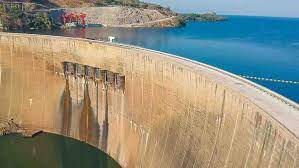Power crisis deepens
...as Kariba water levels plunge

CLOUDINE MATOLA
Industry is suffering from crippling power cuts with some companies enduring prolonged unscheduled load shedding of up to 12 hours daily, Business Times can report.
The low generation capacity at Kariba South Hydroelectric Power Station has forced power utility ZESA to implement rolling power cuts.
Yesterday, the Zimbabwe Power Company (ZPC) , a generation unit of ZESA Holdings, produced 1,206 megawatts (MW) against a national demand of 1700MW.
The largest coal-fired power plant in the nation, Hwange Power Station, produced 914MW yesterday, while Kariba South Hydroelectric Power Station produced 292MW out of a potential 1050MW, according to generation statistics obtained from the ZPC ‘s website.
To cover for the gap, Zimbabwe imports electricity from South Africa power utility, Eskom , Mozambique’s Hydro Cahora Bassa and ZESCO of Zambia.
However, Zimbabwe is not getting adequate imports as ZESA entered into non-firm contracts with the regional power utilities, meaning they can only supply electricity if they have surplus.
Exacerbating the situation is that Eskom and other regional power utilities are also suffering from electricity insufficiency, making it difficult for them to supply Zimbabwe.
Due to outdated technology, small power plants in Bulawayo, Munyati, and Harare are unable to produce electricity. The plants will eventually be decommissioned, according to the Minister of Energy and Power Development, Edgar Moyo.
Captains of industry said the power crisis has deepened.
They said companies have been forced to use backup diesel generators, which are expensive to run.
The power crisis, according to the Zimbabwe National Chamber of Commerce president Mike Kamungeremu, has impacted industry.
He, however, advised companies with large plants to engage ZESA in order for them to have special lines so that they will not be affected by the power outages.
“So naturally, there will be lost production, which may probably see certain products being hit by shortages,” Kamungeremu said.
He added: “For the big plants, unfortunately, they just have to wait for power to be restored.
“They probably need to have some special arrangements with the ZESA so that they are spared from load shedding.”
“I know quite a number that have done that. Some have been given dedicated lines so that they are always on priority.”
Kamungeremu went on to say that some businesses have begun to invest in alternate power sources in order to maintain operations even in the face of ongoing power disruptions.
“We are investing in alternative power sources, quite a number of companies have gone green, they have installed solar plants at their premises.
“Some are using generators like I highlighted the effect of which is an increase in cost.
“So yes we are employing some other alternatives that are still helping us to continue doing business and I actually appeal to those that have not to actually think of investing in alternative energy so that we do not rely solely on the on the grid.”
Speaking in Parliament, Minister Moyo emphasized that the problems at the hydroelectric power plant in Kariba , where 800 MW have been lost, are mostly to blame for the ongoing power disruptions.
According to Zambezi River Authority, a joint venture outfit owned by the governments of Zimbabwe and Zambia and is responsible for the management of the Zambezi River waters and the Kariba Dam complex which comprises the dam wall and water storage reservoirs and other associated ancillary facilities such as lake levels and river inflows monitoring equipment, the lake level has decreased to 477.30m which is 12.4% usable storage as at June 24 2024 compared to 479.93m which translate to 31.30% usable storage recorded on the same date last year.
The Kariba Lake is designed to operate between levels 475.50m and 488.50m (with 0.70m freeboard) for hydropower generation.
“The issue of power supply in the country is heavily affected by hydrological issues in Lake Kariba, where we have lost over 800 megawatts.
“The stored capacity at Kariba is 1 050 megawatts and we are only able to produce 214 megawatts on average because of the water rationing which has resulted out of low inflows in the lake.
“On that perspective, after losing over 800 megawatts, it makes it very difficult to sufficiently supply power in the country,” Moyo said.









